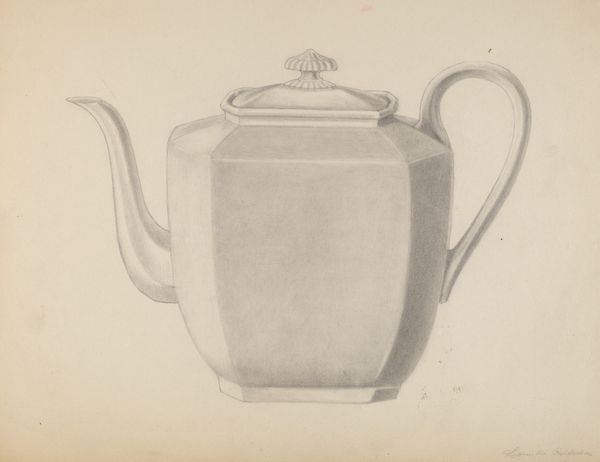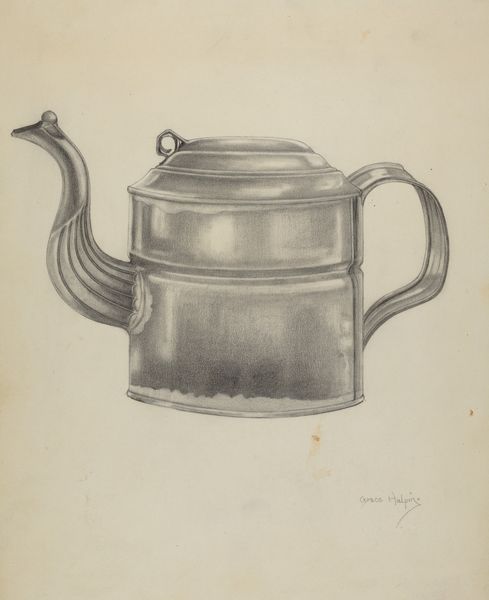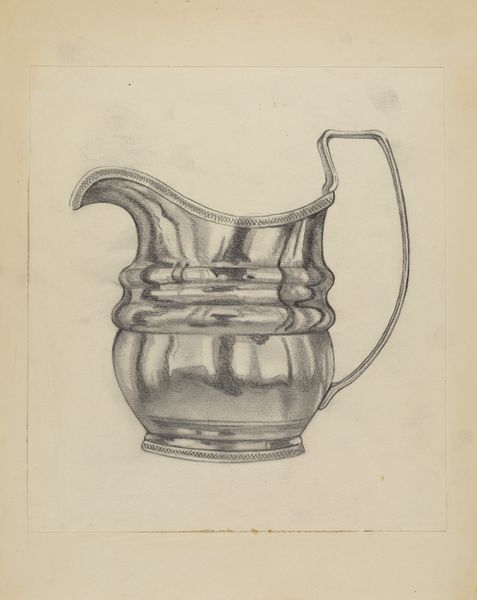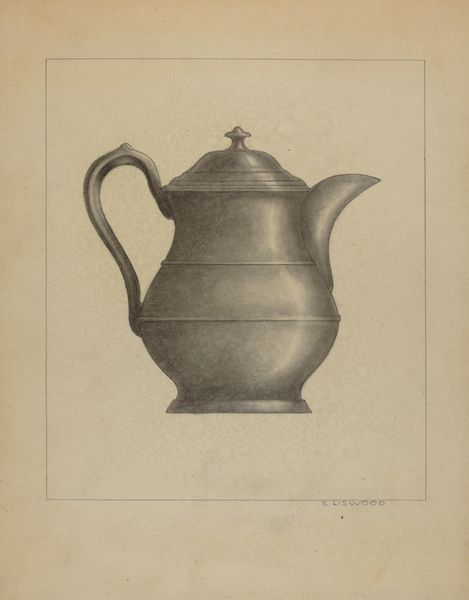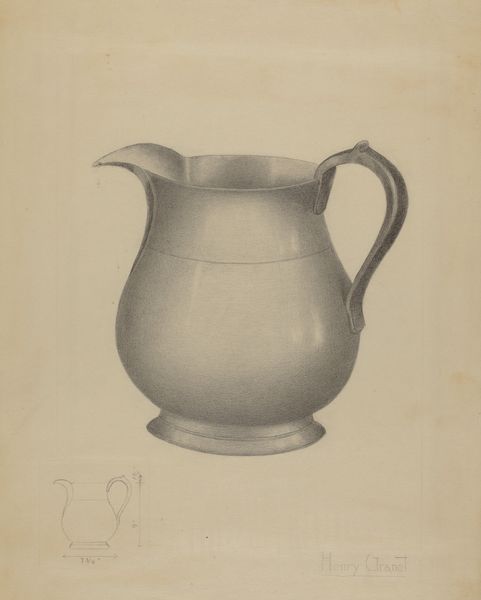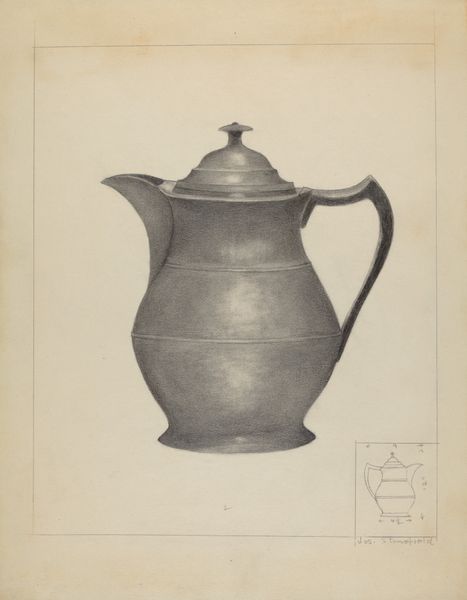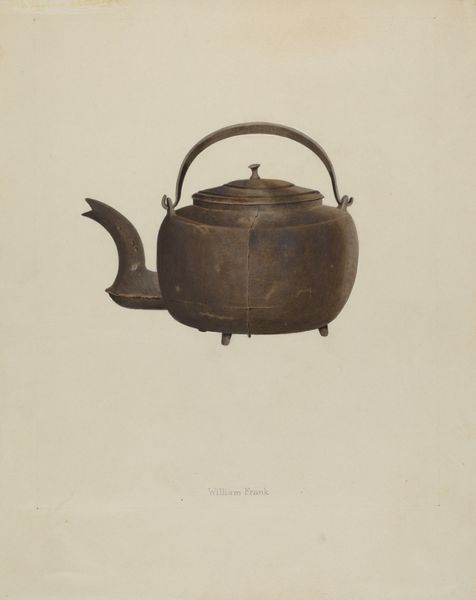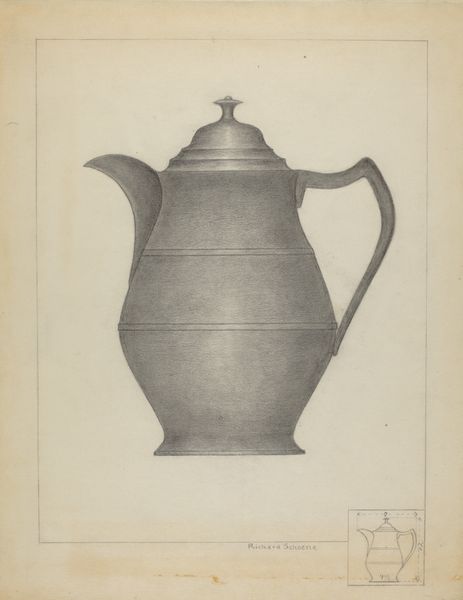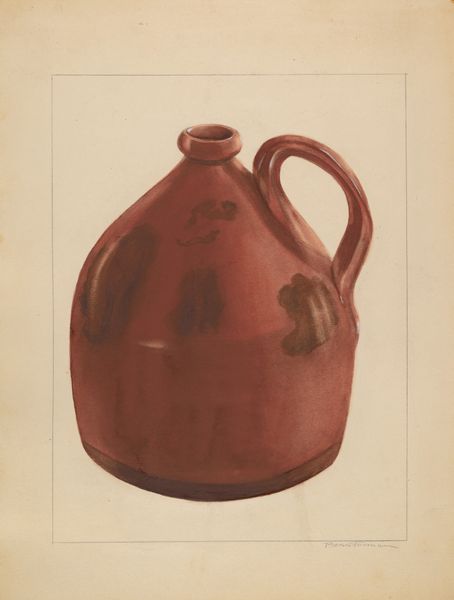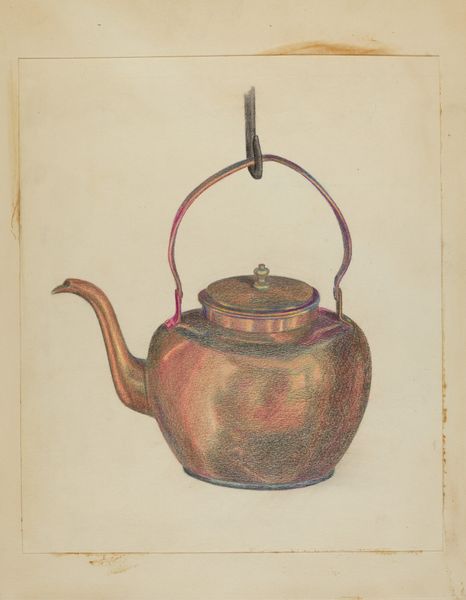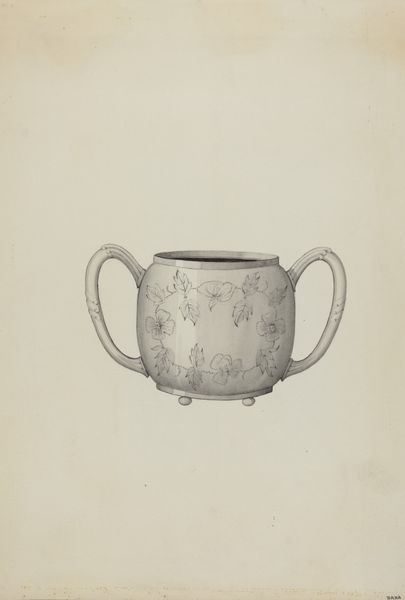
drawing, pencil
#
drawing
#
pencil drawing
#
pencil
#
realism
Dimensions: overall: 28 x 22.9 cm (11 x 9 in.) Original IAD Object: 9" in diameter; 8" high
Copyright: National Gallery of Art: CC0 1.0
Editor: This is Frederick Jackson's "Iron Tea Kettle," a pencil drawing from between 1935 and 1942. There's a quietness to it, almost meditative. What stands out to you when you look at it? Curator: The deliberate choice of an iron tea kettle, during that specific period, resonates with particular social narratives. It is rendered with a very clear intention for distribution in an institutional setting, suggesting an examination and validation of ordinary objects and life, but I'm struck by the absence of the human element. Why do you think he chose this object, and this specific medium? Editor: Perhaps because it’s such a common, everyday object? Choosing pencil makes it feel more accessible. A way to elevate the mundane? Curator: Precisely! Think about the socio-economic context. The '30s and early '40s saw massive social upheaval. Elevating a simple tea kettle, mass produced in the early days of industry to such meticulous detail offered a silent commentary. But accessible to whom, and displayed where? How does that influence our viewing? Editor: Good question! I guess an exhibition would put it into a different perspective and maybe offer it to someone as high art. It makes it more valuable and important. Curator: And it is by these means of cultural infrastructure – galleries, collections, art educators – that value and importance are culturally manufactured and reinforced, a lens through which an everyday object, rendered in pencil, becomes an object of significant contemplation, and, by association, its viewers become people of cultivated significance. Editor: I never thought of it that way, but it does seem to imply more than just its face value. It prompts questions about access, the politics of display and ultimately, what we consider "art". Curator: Indeed. Seeing beyond the immediate aesthetic invites us to critically assess art's role within the broader societal framework. Editor: Thank you for providing such a different perspective! It's amazing how much historical context shapes our understanding of a simple drawing.
Comments
No comments
Be the first to comment and join the conversation on the ultimate creative platform.
